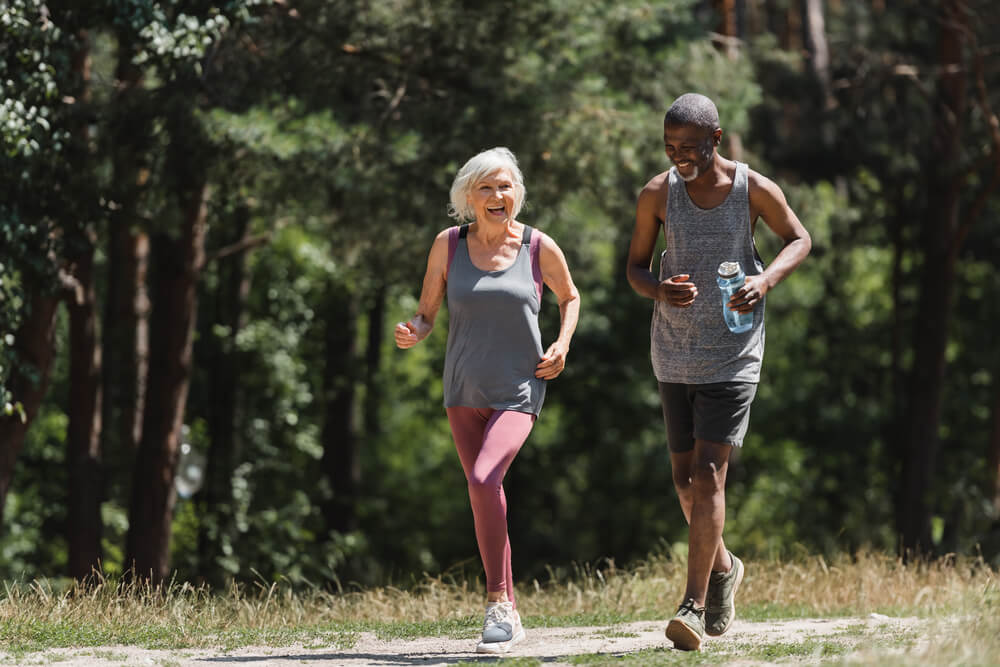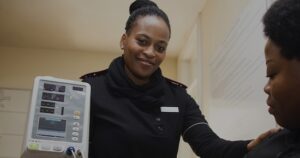Getting enough exercise is important for people of every age. Fitness activities can help you boost energy levels, maintain a healthy weight, and feel great about yourself. If you have stopped exercising, it is not too late to get started again. This guide will help you learn how to start exercising again as an older adult in a few simple steps.
Step By Step Guide for How To Start Exercising Again

Increasing physical fitness is a great idea. However, older adults may want to take a cautious approach. The following steps can help you safely get more active.
Talk to Your Doctor
This is a good rule of thumb for everyone who wants to learn how to start exercising again after a break; however, it is critical for older adults who have a chronic health condition or problems with balance. Be sure to schedule this conversation well before you plan to start exercising so you have time to get any tests or make program changes.
Find Your Why
Everyone who goes back to exercising after some time away has a reason for doing it. Maybe you want to have less pain or improve your balance. Common motivators for older adults include:
- Avoiding a fall and retaining your independence
- Being able to play with your grandchildren
- Continuing to enjoy your favorite hobbies
- Managing a chronic health condition
Remember, there is no right or wrong reason to start exercising. However, you do want to be honest during this phase. If you identify your why, you can establish milestones to track progress until you reach that goal.
Assess Your Resources

Before you get too far into planning how to start exercising again as an older adult, take a few minutes to assess what resources are available to you. This can include personal and family resources, community resources, and financial resources. Be realistic so you don’t become overwhelmed as you start your fitness program. Start small and build gradually to make the process more manageable.
Personal resources might include things like a backyard pool, a set of dumbbells, or a yoga mat. It can also include knowledge you have, such as how to play pickleball.
Community resources may include fitness facilities, walking trails, or a pool for you to use. Many senior living communities have exercise spaces and programs that include group exercise classes appropriate for resident fitness levels. You might be surprised to find options such as chair exercise classes, tai chi, and walking clubs right in your own backyard.
Not all exercise forms require access to special equipment or a dedicated space. For example, you only need a well-fitting pair of shoes to start walking, and you can do a few simple yoga stretches right in bed. You can even use household items to start with strength training — fill a cotton shopping bag with a few canned goods, and you have a practical homemade weight.
Choose Your Exercise Modality
There are four main categories of exercises for seniors designed to improve flexibility, strength, endurance, and balance. The most effective programs include activities from each. However, there are many ways to accomplish this, and you want to choose an exercise modality that you will stick with.
A few exercises to consider include:
- Group fitness classes (improves balance, endurance, flexibility, and strength)
- Swimming (increases endurance and strength)
- Tai chi (encourage balance, strength, and flexibility)
- Walking (focuses on strength and endurance)
- Weight training (increases strength in specific muscles)
- Yoga (improves flexibility, strength)
Choose activities you enjoy, and that do not cause you harm. If you have severe arthritis in your knees, deep squats are probably not going to feel great. Instead, try gentler movements that are easier on the joints. Listen to your body and choose exercises that work well for you.
Establish a Schedule

Having an exercise schedule is a great way to make sure you get to the physical activities you want. Choose a few exercises and plan a time each week for them.
Once you establish a schedule, you need to follow it. That can be harder than it sounds, especially when unexpected things pop up. Some tips to help you find and stick with a fitness schedule include:
- Keep a journal: Record what you do each session along with your thoughts and reflections on it in a journal. This is also a great way to keep track of your progress and make notes about health metrics.
- Recruit a fitness partner: Exercising with a friend helps keep you accountable to your goals. It also makes it more fun, so you have a better chance of sticking with it.
- Start slow: It is tempting to start with all of your chosen exercises, but that can lead to burnout and injury. Instead, start slow and build up to your preferred schedule.
Remember that a schedule can change over time. You may find that you need to adjust days or times or that you really enjoy one activity over another and want to spend more time on it. Be flexible and keep your end goal in sight to ensure your schedule moves you closer to it.
Benefits of Exercise for Older Adults
Keeping the benefits of exercise in mind can help you stick with your program. These benefits can vary from person to person, but many older adults notice things like improved strength and balance, better sleep, and less pain.
Some people find that regular exercise also helps with managing chronic health conditions like type 2 diabetes and high blood pressure. For example, walking and swimming are excellent exercises for improving cardiovascular health and helping to manage these conditions. Others who start exercising again as older adults find it helps them achieve and maintain a healthy weight.
Another key benefit of physical activity is that it helps reduce feelings of stress and anxiety. Many people also report improved moods and increased energy levels. If you choose group classes, the social interaction keeps loneliness at bay.
Learn How To Start Exercising Again as an Older Adult
At Elder Care Alliance, we believe that physical activity is important at every age. Our communities support whole-person health and wellness through age- and ability-appropriate programs to guide residents on how to start exercising again. Schedule a visit to learn more.




















